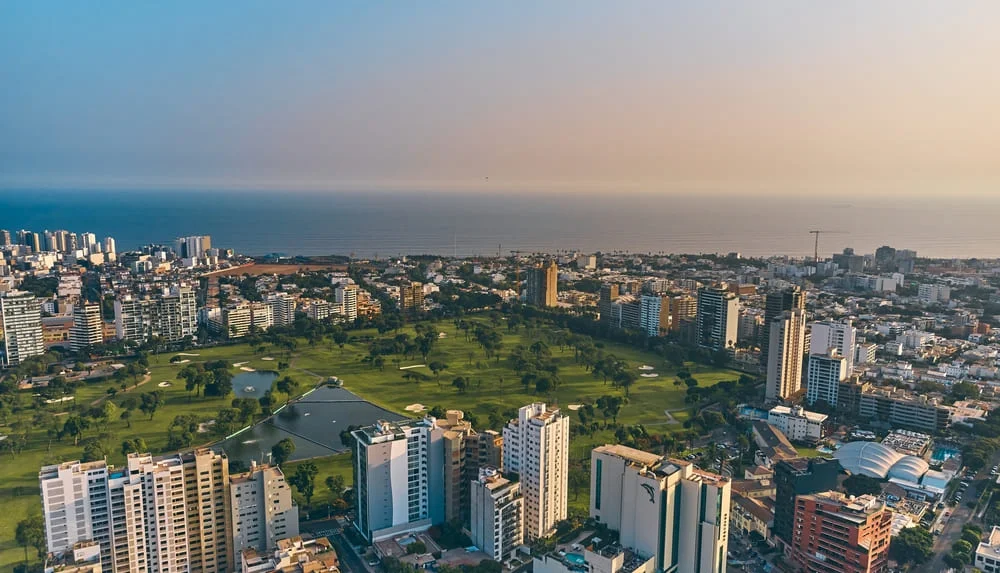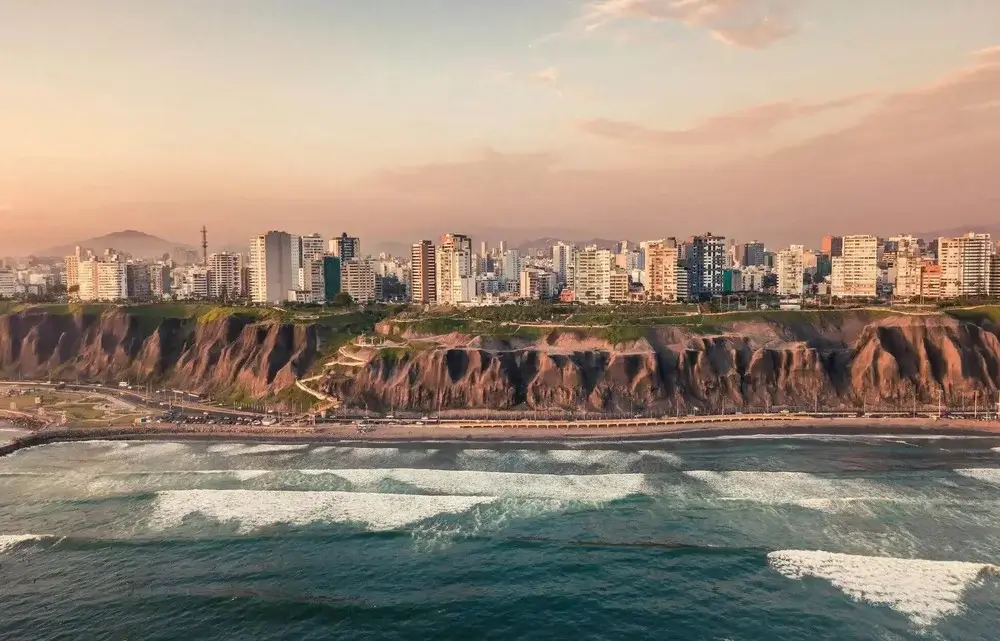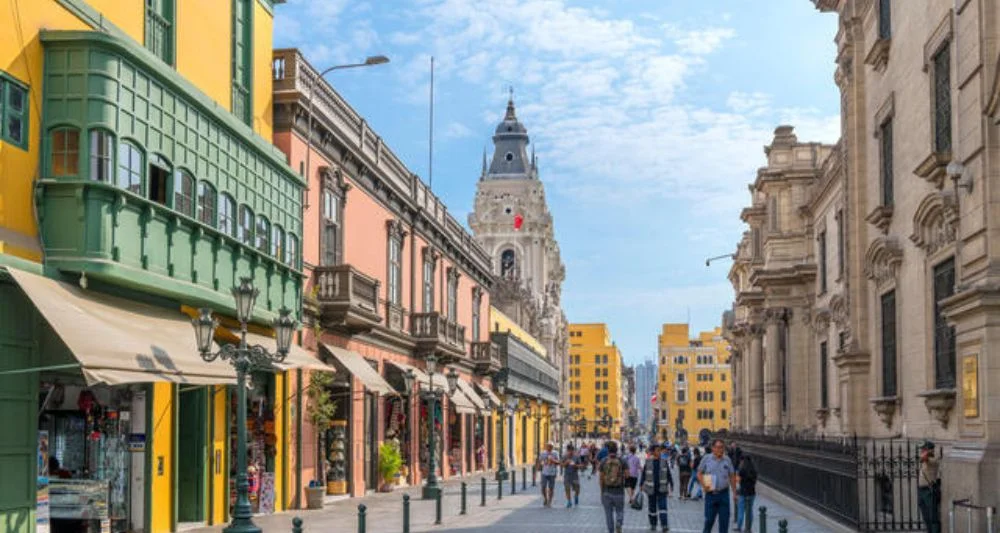The Sacred Valley or Machu Picchu are frequently the first places that most people think of when they think of Peru. However, any experienced traveler will tell you that Lima is where the real adventure starts. Lima, the capital of Peru, is a fascinating fusion of colonial history, modern cuisine, and coastal energy. It is situated along the Pacific Ocean. Lima provides a vibrant entryway to all that Peru has to offer, whether you're an adventurer, a culture vulture, or a family organizing your next trip.
We'll look at what makes Lima so much more than just a capital in this guide. Here are some reasons why Lima should to be your first and perhaps most memorabl stop, both for its historical foundations and its contemporary wonders.
1. Where Is Lima? Understanding Peru’s Capital City
Located on the arid coast of western South America, Lima sits between the Pacific Ocean and the foothills of the Andes. It’s the largest city in Peru and home to over 9 million people. This strategic location makes Lima not only a bustling metropolis but also a vital travel hub connecting coast, jungle, and highlands.
2. A Glimpse into History: The Origins of Lima
Since its founding in 1535 as "La Ciudad de los Reyes" (City of Kings) by Spanish conquistador Francisco Pizarro, Lima has served as Peru's political, cultural, and economic center. Its magnificent cathedrals, squares, and old mansions are reminders of Spanish colonial rule.
Don’t Miss: The Historic Centre of Lima, a UNESCO World Heritage Site.
3. Why Is Lima the Capital of Peru?
Because of its advantageous coastal location, historical significance, and ongoing political and economic clout, Lima is the capital of Peru. The Spanish conquistador Francisco Pizarro founded Lima in 1535 as "La Ciudad de los Reyes" (The City of Kings). Because of its closeness to the Pacific Ocean and ease of access for trade and governance, Lima became the focal point of Spanish colonial rule in South America.
As a center of administration, religion, and trade, Lima eventually became the most significant city in the Viceroyalty of Peru. Lima maintained its capital status following Peru's independence in 1821 because of its well-established infrastructure, central government institutions, and thriving economy.
Today, Lima remains the heart of Peru’s political power, hosting the presidential palace, congress, and all major ministries. It’s also the nation’s largest city and a dynamic center for culture, education, and business, making it the logical and enduring choice as the capital of Peru.
4. Top Attractions in Lima for First-Time Visitors
- Plaza Mayor: the city’s historical centerpiece
- Larco Museum: pre-Columbian art in a gorgeous 18th-century mansion
- Miraflores Boardwalk: scenic coastal views perfect for evening strolls. (Things to Do in Miraflores)
- Barranco District: Lima’s bohemian neighborhood filled with street art and nightlife. (Guide to Barranco)
5. Hidden Gems: Local Spots You Won’t Find in Most Guides
Lima is full of surprises. Seek out:
- El Olivar Park in San Isidro
- MATE Museum, featuring works by famed photographer Mario Testino
- Pachacamac Ruins, just an hour outside the city
Take a look at the Best Museums in Lima
6. Lima for Adventure Seekers: Surfing, Paragliding, and Urban Outdoor Thrills
For adrenaline lovers and outdoor enthusiasts, Lima is one of the few capital cities in the world where adventure sports are part of everyday life. Just minutes from the historic downtown and trendy districts, you’ll find a playground for surfers, paragliders, bikers, and explorers.
With reliable waves and a wide range of beaches along the Costa Verde, surfing is a year-round sport in Lima. Both novice and experienced surfers will love Playa Makaha, which is situated in the posh Miraflores neighborhood. Even during a brief visit, surfing is made easy by the surf schools that line the shore, providing lessons and board rentals.
If you're looking for a thrilling aerial perspective of Lima, don’t miss paragliding over the cliffs of Miraflores. Launching from the Parque del Amor, paragliders soar above the Pacific Ocean, with panoramic views of the coastal skyline, oceanfront parks, and high-rise buildings hugging the dramatic cliffs. It's one of the most unforgettable ways to see the city.
Lima's adventure options go beyond surfing and paragliding; they also include biking along the Malecón, paddleboarding in serene bays, and urban hiking routes that link natural retreats with cultural landmarks. Lima provides the ideal balance of adventure activities and urban energy, whether you're an adrenaline junkie or just looking for a little outdoor fun on your Peru itinerary.
7. Family-Friendly Activities in Lima
- Parque de la Reserva with its Magic Water Circuit
- Museo de Historia Natural for a glimpse of Peru’s wildlife
- Parque de las Leyendas zoo and archaeological park combo
8. Lima’s Culinary Scene: Why It’s a Global Food Capital
Lima is the culinary capital of South America in addition to being the political center of Peru. Lima has earned its reputation as a global food destination by drawing chefs, foodies, and culinary tourists from all over the world with its vibrant and varied food culture.
Did you know that three of the top 50 restaurants in the world are located in Lima? These include the award-winning Maido, which is renowned for its daring Nikkei (Peruvian-Japanese fusion) cuisine, Central, which was named the World's Best Restaurant in 2023, and Kjolle, which is run by one of Peru's best female chefs. A combination of fresh seafood from the coast, international influences, and ancient Andean ingredients are served in world-class style when dining in Lima.
For a true taste of Peru, sample ceviche, the national dish, at iconic spots like La Mar Cebichería or local markets like Mercado de Surquillo. Beyond fine dining, is equally rich and satisfying. Don't miss out on traditional treats like:
- Anticuchos (grilled beef heart skewers)
- Picarones (sweet potato and pumpkin doughnuts drizzled with syrup)
- The legendary Pisco Sour, Peru’s signature cocktail.
From gourmet tasting menus to authentic bites in Barranco and Miraflores, Lima offers an unforgettable food journey for every palate. Whether you're on a culinary tour of Peru or just spending a few days in the capital, Lima’s food scene is a must-experience highlight that blends history, innovation, and soul in every bite.
→ Peruvian Food: Top 10 Dishes You Can't Miss
9. Best Time to Visit Lima: Weather, Seasons & Festivals
Lima has a mild desert climate. While it rarely rains, the best time to visit is between December and April when skies are clearer. Don’t miss:
- Mistura Food Festival (September)
- Peru’s National Holidays (July 28–29)
10. How to Get to Lima and Move Around the City
Arrive via Jorge Chávez International Airport, with direct flights from major cities around the world. For local transport:
- Use official taxis or rideshare apps
- Explore Metropolitano Bus Lines for efficient travel
- Walk or bike along Miraflores’ malecon (coastal walkway)
11. Planning Your Stay: Where to Sleep, Eat & Explore
We recommend:
- Luxury: Hotel B (Barranco), Country Club Lima Hotel
- Mid-range: Casa Andina Select, Tierra Viva
- Boutique: Atemporal, Quinta Miraflores Boutique
Explore our handpicked Lima travel packages for more ideas.
12. From Lima to the Andes: Why the Capital Is the Perfect Gateway
Whether it's Lake Titicaca, the Amazon, or Machu Picchu, most adventures in Peru start in Lima. Lima is a perfect starting point because flights from the capital get to Cusco, Arequipa, and Puerto Maldonado in less than two hours.
13. Quick Tips for Visiting Lima: Safety, Etiquette & Essentials
Stick to tourist-friendly districts like Miraflores, Barranco, and San Isidro
- Avoid walking alone at night in unfamiliar neighborhoods
- Tap water is not drinkable opt for bottled
- Learn a few Spanish phrases locals appreciate the effort!
14. Why Every Peru Itinerary Should Begin in Lima
Lima is more than just Peru's capital; it embodies the nation's multiculturalism. It combines the ancient and the modern, the regional and the worldwide, the peaceful and the thrilling. Lima has a way of staying with you long after you've moved on, whether you're enjoying a plate of ceviche by the sea or exploring colonial streets at dusk.
Frequently Asked Questions About Lima, Peru
Why is Lima the capital of Peru?
Lima was founded by Spanish conquistador Francisco Pizarro in 1535 and quickly became the most important city in Spanish South America due to its strategic coastal location. Today, Lima remains the capital because of its political, economic, and cultural significance.
Is Lima worth visiting?
Absolutely. Lima offers a vibrant mix of colonial architecture, award-winning gastronomy, Pacific coast views, and rich cultural experiences. Whether you're a foodie, history buff, or adventure seeker, Lima is a must-visit destination in Peru.
What are the top things to do in Lima?
Some of Lima’s top attractions include:
Exploring Barranco’s bohemian art scene
- Visiting Museo Larco for pre-Columbian treasures
- Paragliding over Miraflores cliffs
- Tasting ceviche in local markets
- Surfing at Costa Verde beaches
Is Lima safe for tourists?
Like most large cities, Lima has both safe and less safe areas. Tourist districts such as Miraflores, Barranco, and San Isidro are generally safe and well-patrolled. Always take standard travel precautions and work with trusted local guides.
When is the best time to visit Lima?
The best time to visit Lima is during the dry season (May to November) when the skies are clearer and temperatures are mild. This is ideal for sightseeing, beach activities, and culinary tours.
How many days should I spend in Lima?
We recommend 2–3 days to experience Lima’s highlights. This gives you time to explore historic sites, enjoy top restaurants, and experience the local culture without feeling rushed.
Lima isn’t just the capital of Peru it’s the essence of the country’s diverse spirit. It blends the old with the new, the local with the global, and the tranquil with the exhilarating. Whether you’re savoring a plate of ceviche by the sea or wandering colonial streets at sunset, Lima has a way of lingering in your memory long after you’ve moved on.
Craving a culinary adventure unlike any other? Book a tailor-made food tour in Lima with Andean Travel Experience and discover why Peru’s capital is at the heart of the world’s gastronomic scene.
From award-winning restaurants to hidden street food gems, we’ll craft an itinerary that delights your taste buds and connects you with local culture.



